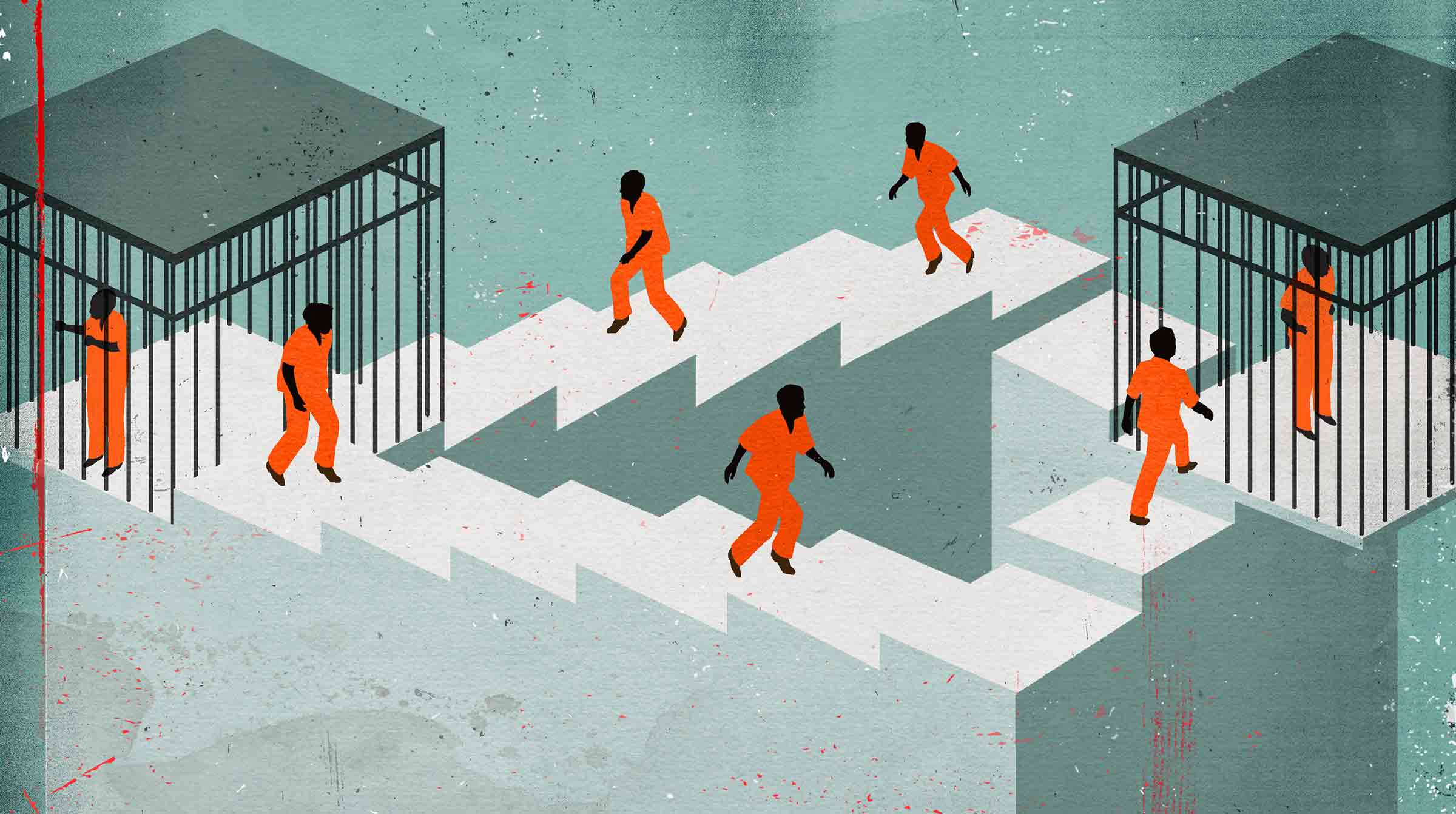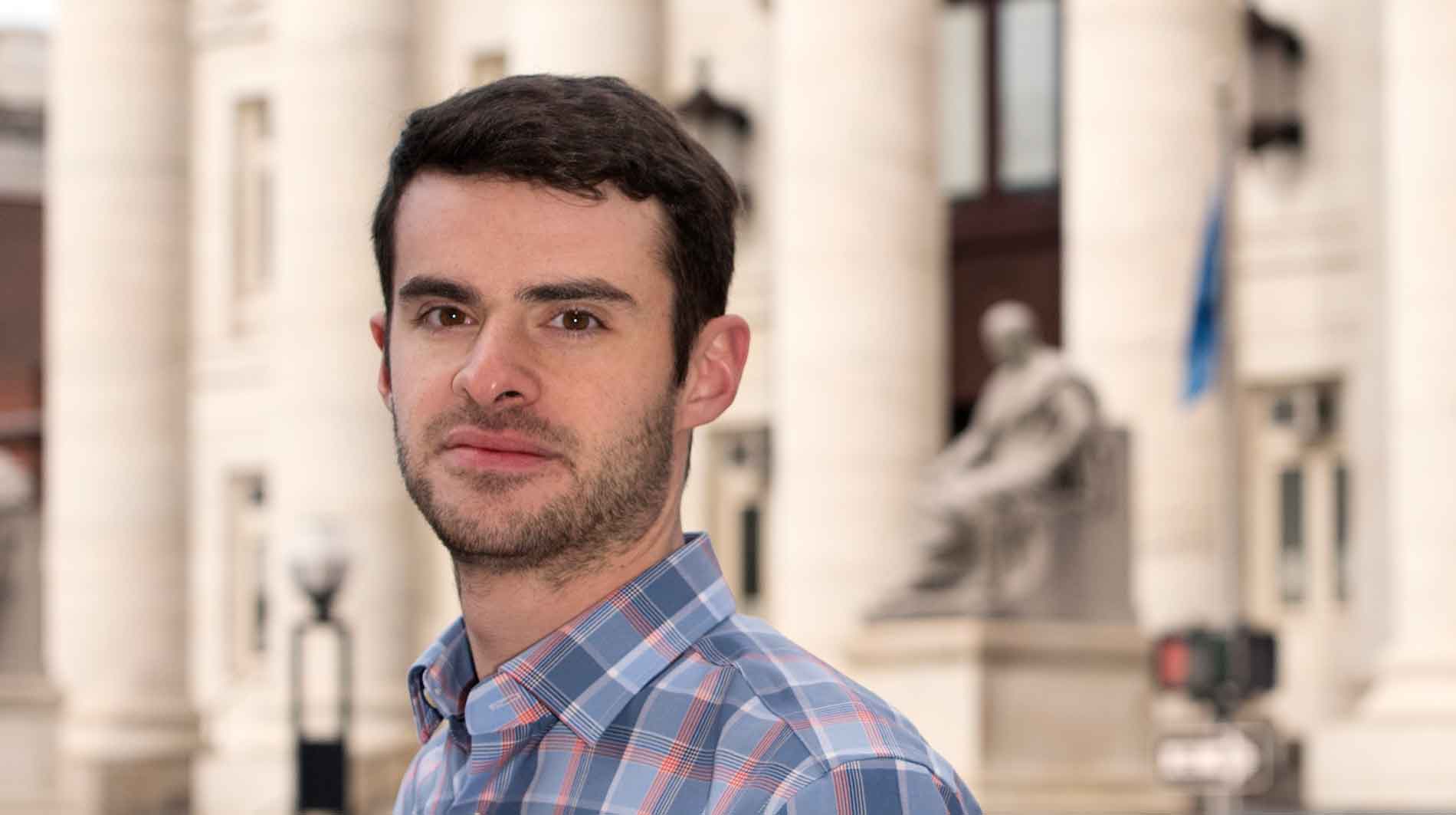Scott Greenberg ’11 was visiting a jail for his work at the Transitions Clinic Network at the Yale School of Medicine when a counselor there told him something that shocked him. There was a man who had been imprisoned for months. He had not been convicted of a crime—in fact, he had not yet gone to trial. He was behind bars merely because he lacked the $500 pretrial bail ordered by the court.

“I thought, why couldn’t I do something when the difference between incarceration and freedom was a few hundred dollars,” he says.
So Greenberg and three Yale colleagues (Brett Davidson, Simone Seiver, and Patrick Sullivan) established the Connecticut Bail Fund, an organization that will pay the bail of pretrial defendants who lack the financial ability to do so. Launched in fall 2016, the bail fund mirrors similar organizations throughout the United States, such as the Brooklyn Community Bail Fund and the Bronx Freedom Fund that provide bail to accused individuals and help them to navigate access to medical, legal, and social service agencies.
“In Connecticut, thousands of innocent individuals are incarcerated each year because they can’t afford bail. That places them at risk of losing their jobs, their homes, and their children,”
Kalief Browder is perhaps the most notable individual who was held pretrial in recent years. Browder, who committed suicide in 2015, was imprisoned on Rikers Island in 2010 at age 16 after being charged with robbery. Unwilling to plead to a crime he said he didn’t commit, he was held for three years pretrial— two of them in solitary confinement—unable to afford the $3,000 bail set after his initial arrest. (After being arraigned, Browder was later denied bail because he was on probation when the alleged robbery took place.) He was released in 2013 when prosecutors, who delayed the trial several times, were unable to meet the burden of proof. Browder’s story—which includes horrific abuse by inmates and guards while imprisoned—was chronicled in the New Yorker.

As with the larger criminal justice system, the bail system disproportionately affects people of color, LGBTQ individuals, poor people, immigrants, and the disabled. In fact, the Marshall Project (a nonprofit news organization covering the U.S. criminal justice system) noted some stark statistics: The number of felony defendants released without bail decreased from 41 percent to 28 percent between 1994 and 2006. The Justice Policy Institute notes that African Americans, like Browder, are less likely to be released on their own recognizance than Caucasians, especially those aged 18–29, who received significantly higher bail amounts than all other racial or ethnic groups. The institute noted disparate pretrial detention rates, as well: Caucasians at 150 per 1,000 defendants, Hispanics at 240 per 1,000, and African Americans at 710 per 1,000. On average, there are 646,000 individuals incarcerated in local jails throughout the U.S. every day, 70 percent of whom are there pretrial, reported the Prison Policy Initiative.
Bail requirements are a boon to the multi-billion-dollar bail bond industry because defendants have two choices: stay in jail to await trial, which can take months or even years, Greenberg says, or use a bail bond agent—who typically receives a 10 percent nonrefundable fee for posting a defendant’s bail.
Bail funds are desperately needed, Greenberg
The decision on whether to require
“Research has shown that those who remain detained while awaiting trial were more likely to go to prison and receive longer sentences compared to those who were released,” wrote the Marshall Project. “It’s harder to mount a robust defense from jail—to find witnesses, to meet with an attorney, to raise the money to pay for a defense.”
In some states, the bail bond industry is growing to include
Greenberg and his colleagues at the Transitions Clinic have raised nearly $100,000 for the Connecticut Bail Fund from various sources including foundations, fellowships, and donations.
“We’re starting with a population that has a bond amount of $3,000 or below,” Greenberg says.
Bail funds across the country have seen significant success, he says. For instance, more than 95 percent of the Brooklyn Community Bail Fund’s clients returned for their court dates, meaning bail money wasn’t lost and eventually was used to help another defendant. In addition, one-third of the Brooklyn fund’s clients have had their charges dropped, Greenberg says.
The Connecticut Bail Fund created a community advisory board with three members—more are expected. All have experience with the criminal justice system and are involved with community organizations that help people who have been in the system. They want to help defendants, raise awareness about the inequities in the bail system, and push for reform, Greenberg says.
It might be a cause the general public can get behind since bail reform will actually save taxpayer money, he says. It costs $137 per day to incarcerate an individual in Connecticut. By providing $100,000 worth of bail to clients on a revolving basis, the Connecticut Bail Fund could potentially save the state approximately $3 million annually, Greenberg says.
“The idea that people shouldn’t be incarcerated because they lack the financial resources to post bail—I find it very clear and compelling. It’s a rare intervention where concerned citizens can get together and actually do something about the incarcerated populations,” Greenberg says.
For more information, visit ctbailfund.org. The fund has just launched the Immigrant Bail Fund, to secure freedom for those being held on bond in Immigration and Customs Enforcement detention. For more: immigrantbailfund.org.
